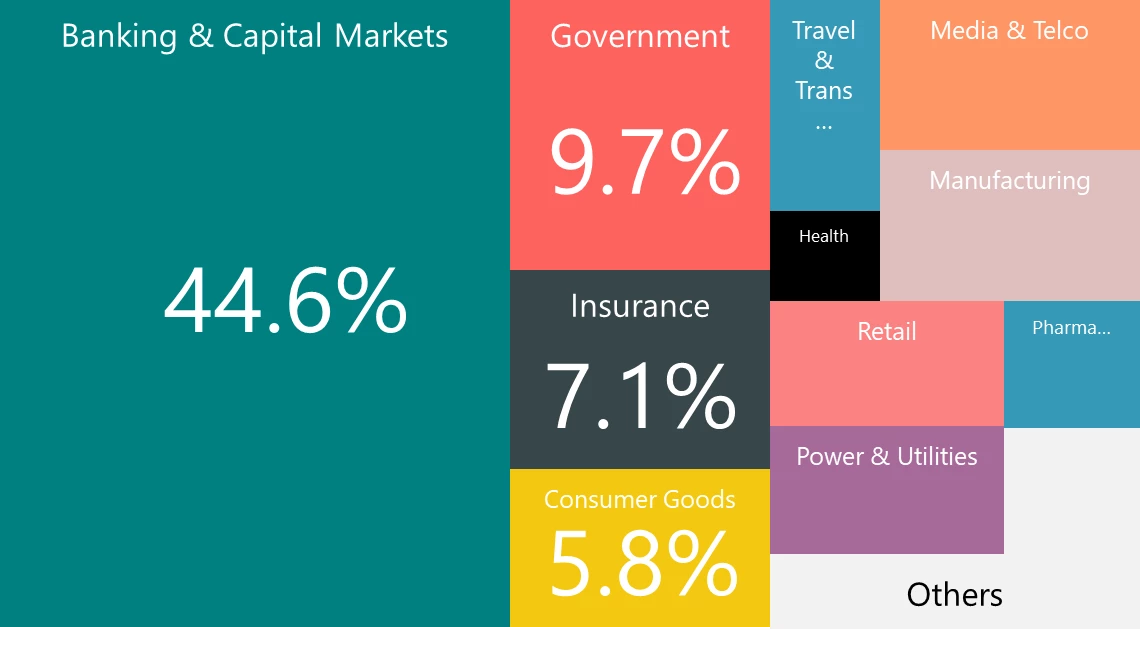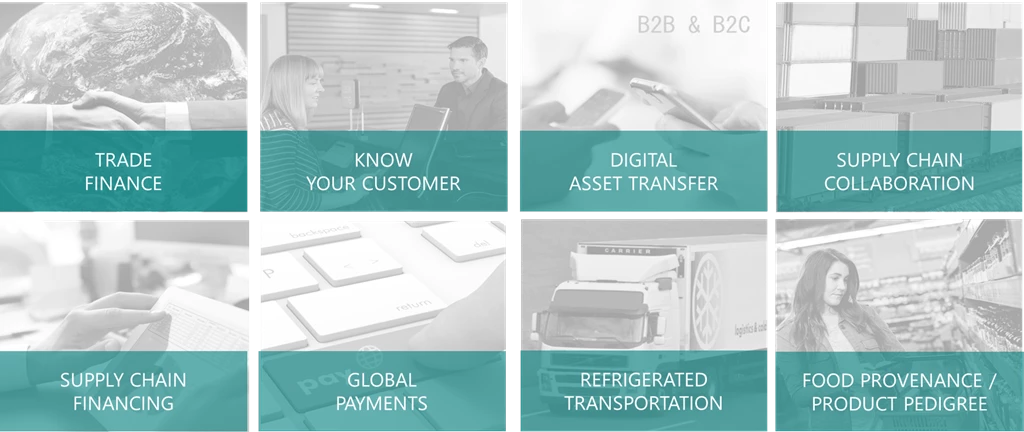Over the past year, we have had the pleasure of working with several customers on their business initiatives related to blockchain’s technology. During this time, we have been helping them to envision business scenarios, choose the right blockchain protocols and distributed ledgers, and most importantly, develop pilots focused on validating the technology capabilities to provide real value to their organizations.
When to use blockchain?
From the technical perspective, we could apply blockchain to many scenarios. However, not every situation requires blockchain, but there are some scenarios where it creates significant value compared to alternative technologies. Usually, these are shared business processes, with the organization in different industries such as financial services, manufacturing, or retail.
The recommendation to recognize blockchain scenarios is to make sure you are using the core capabilities of blockchain. You should respond positively to four key questions (see below), and there should be a real business case with measurable outcomes. If this is not the case, please consider using other more mature technologies.
Blockchain capabilities
The blockchain is one of the top emerging technologies revolutionizing today’s business models. Fundamentally, blockchain enables participants to exchange value without the need for intermediaries.

But what is blockchain exactly? And what capabilities make it so attractive for enterprises? The blockchain is a disruptive technology trend that enables a shared, authentic, decentralized ledger:
- SECURE: Blockchain uses strong cryptography to create transactions that are impervious to fraud and establishes a shared truth. Also, all the transactions are signed with the digital certificate.
- SHARED: The real benefits of blockchain, over conventional technology, are achieved when we use it to link organizations to share information on a distributed ledger.
- DISTRIBUTED: A blockchain can be distributed across multiple organizations and becomes more secure as replicas are added.
- LEDGER: Every transaction is written into the ledger once and cannot be changed after the fact.
Questions to be answered before developing a blockchain solution
Answering the following four questions can determine if blockchain is appropriate for the identified business scenario.
- Do multiple parties share data?
- Do multiple parties update data?
- Is there a requirement for verification?
- Can intermediaries be removed and reduce cost and complexity?
If you answered yes to all of these questions, then you have a potential scenario to apply blockchain.
Public blockchain vs. enterprise blockchain
A public blockchain (i.e., Bitcoin or Ethereum) is an Internet protocol managing the distribution of potential unique data with the following characteristics:
- Many, anonymous, or pseudonymous participants
- Open read and write by all participants
- Consensus by proof of work
Too often organizations fail with blockchain because they try to use public blockchain networks, or their rules, for their enterprise solutions. Instead, the organization should consider the use of Enterprise Blockchain.
What do we mean with enterprise blockchain? An enterprise blockchain (i.e., Hyperlegder, Ethereum Enterprise, Ripple, Quorum, etc.) is a distributed ledger with the following characteristics:
- All the participants, and their digital identities, are known from one or many trusted organizations
- Writes and read permissions are roles-based and usually requires consensus of several participants
- Multiple algorithms are used for consensus
You should know that we have two types of enterprise blockchain:
- Private: Usually managed by a single organization. Typically, the network participants are internal business units or divisions.
- Consortium: In this case, the blockchain network is managed by multiple trusted organizations. New participants require a consensus of several participants.
Industries using blockchain
The potential impact of blockchain is significant across all sectors and industries—from banking to government to healthcare and beyond:
- Eliminates intermediaries increasing efficiency and speed.
- Simplifies operations by reducing cost and time related to reconciliations and disputes.
- Potentially enables new business models increasing revenue and savings.
According to top market analysts and leading consulting firms, the top five industries that blockchain will likely disrupt by 2020 are financial services, government, real estate, supply chain management, and media distribution.
Reviewing our historical data, we also see that close to 80% of the customers using blockchain in Microsoft Azure are also financial services institutions, including insurance companies. However, as you can see in the following figure, the trend is changing if we just consider the existing engagement and pipeline.

On the other hand, double checking the solutions related to banking & capital markets, we had discovered that 60% of the blockchain implementations involved at least one participant from a second industry such as manufacturing, government, or retail.
Common business patterns
Just in the last 12 months, we were able to count 76 scenarios across seven industries. The good news is that based on our engagements with customers and partners, we also were able to reduce them in the following eight business patterns.

By exploring business patterns, our customers can now learn how blockchain can promote operational simplification, reduce the role of intermediaries, and potentially enable new business models. For each pattern, we provide an overview of our common needs and challenges, the potential benefits from applying blockchain, key near-term milestones for initial blockchain applications, and an use case sequence diagram. Using this approach is helping us to define reference architectures, and developing IP to reduce the time-to-market of blockchain solutions.
As an illustrated example, below I’m sharing current blockchain applications and some public references:
- Bank of America and Microsoft Treasury using Blockchain in a Trade Finance scenario to improve the process of issuing a Standby Letter of Credit to a customer (SBLC) to a customer. The process has been reduced from 3-5 weeks to just 3-5 days.
- Renault Group is working together with Microsoft and VISEO to create the first digital car maintenance book based on Blockchain and using Microsoft Azure capabilities.
- Large food manufacturers and distributors are using blockchain to track their premium products journey from source to consumption efficiently, and to have a shared ledger as the single source of truth.
Recommended engagement model
Based on our previous engagements, our experience delivering innovative projects and using our agile approach, we are now ready to help customers understand the potential impact of blockchain technology on their industries, as well as determine whether it is capable of delivering both cost efficiencies and competitive advantage for them.
Microsoft Services provides offers to help our customers have an improved understanding of blockchain, explore the potential of this technology through business scenarios and implement a Minimum Viable Product (MVP) based on Microsoft Azure.

Supported protocols
To finish, let us share our answer to the most frequently asked questions by our customers. Does Microsoft have its own blockchain ledger? The answer is NO.
Microsoft has been working on blockchain since November 2015 when we were the first major cloud provider to announce a Blockchain as a Service (BaaS). Our vision is to be the worldwide cloud platform leader powering the blockchain-based applications.
Microsoft is working with customers, partners, and the developer community to accelerate blockchain’s enterprise readiness. Our mission is to help companies thrive in this new era of secure multi-party collaboration by delivering open, scalable platforms and services that any company can use to improve shared business processes. Our roadmap is based on the following principles:
- Blockchain on your terms: No one-size-fits-all approach — Microsoft’s platform and ecosystem partners make it easy to get started and iterate quickly with the blockchain of your choice, both on-premises and in the cloud.
- Integrated with your business: Merge blockchain with the IT assets you already have. Azure lets you integrate blockchain with the cloud services your organization uses to power shared processes.
- Ready for the enterprise: With the Confidential Consortium Blockchain Framework, and our Azure services integrations, Microsoft is addressing existing technology gaps with blockchain and helps organizations build durable enterprise-grade applications.
Our active participation in industry consortiums such as R3, Enterprise Ethereum Alliance, and IC3, also help us to understand core industry scenarios, and to continue learning to meet the needs of our customers.
Currently, Microsoft supports the most widely used blockchain and distributed ledger protocols on Azure, including HyperLedger Fabric, R3 Corda, Quorum, Chain Core, and BlockApps.
For more information, please contact your Microsoft Services representative and ask for the BLOCKCHAIN ESSENTIALS Offer. You can also visit www.microsoft.com/services.
